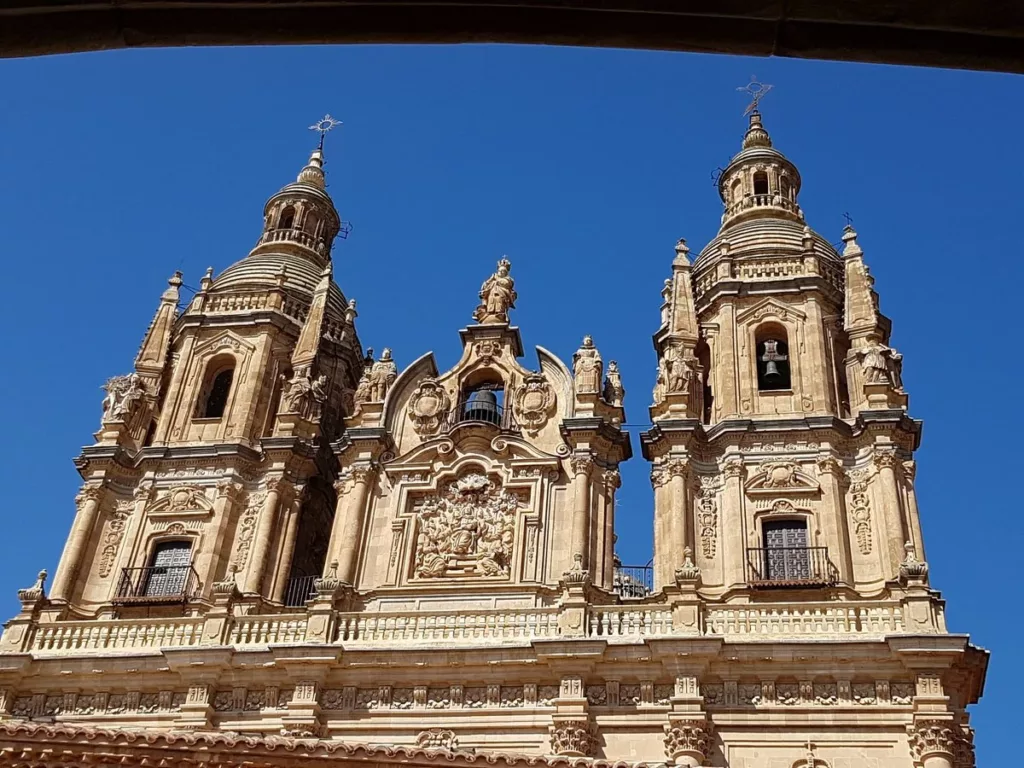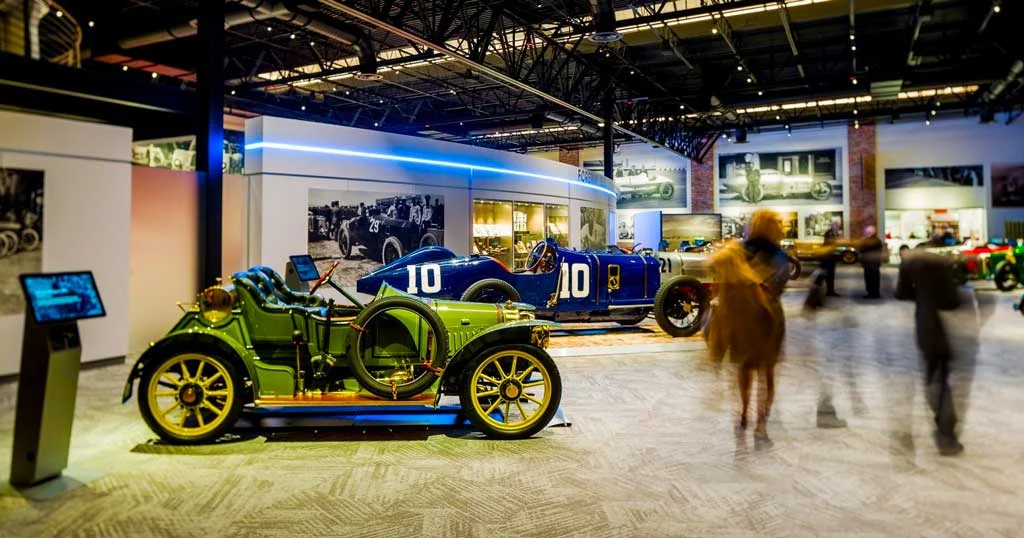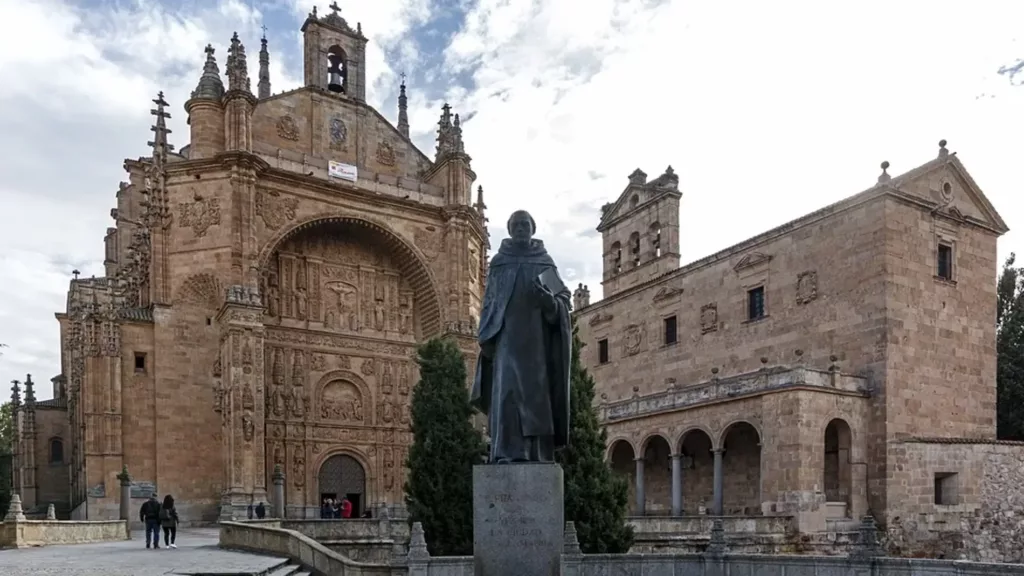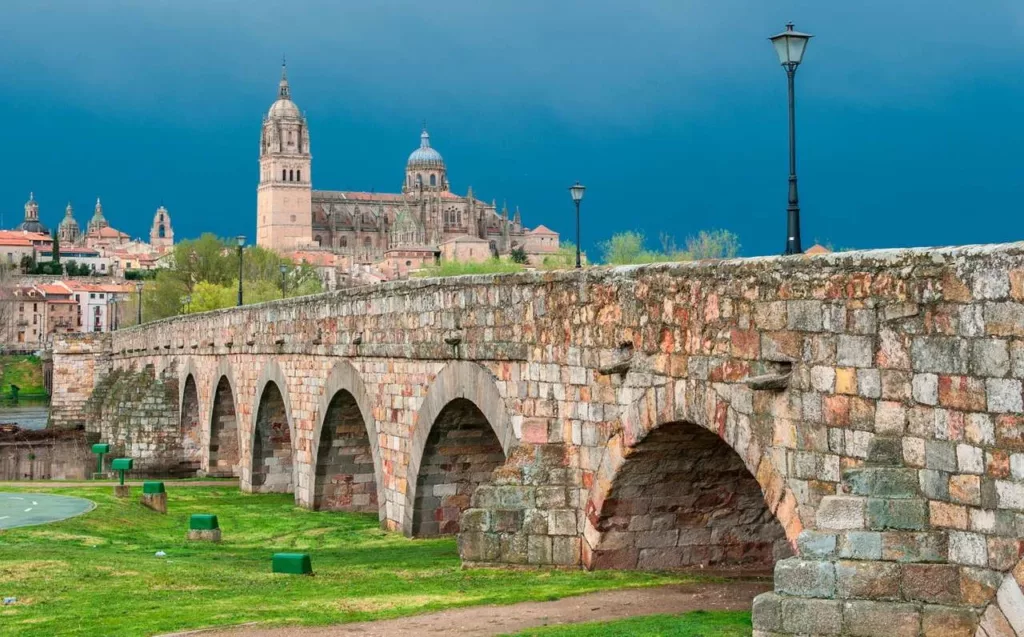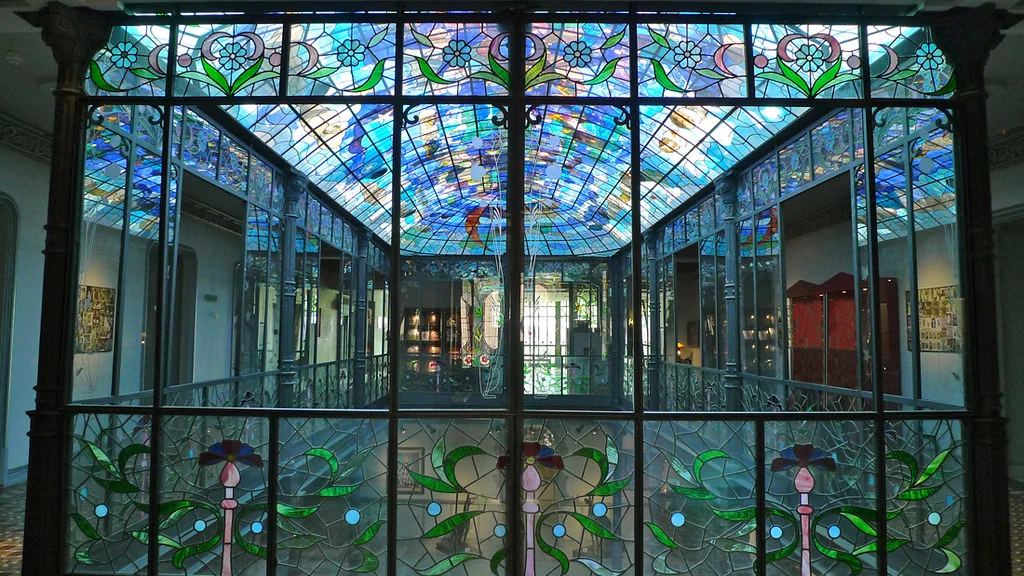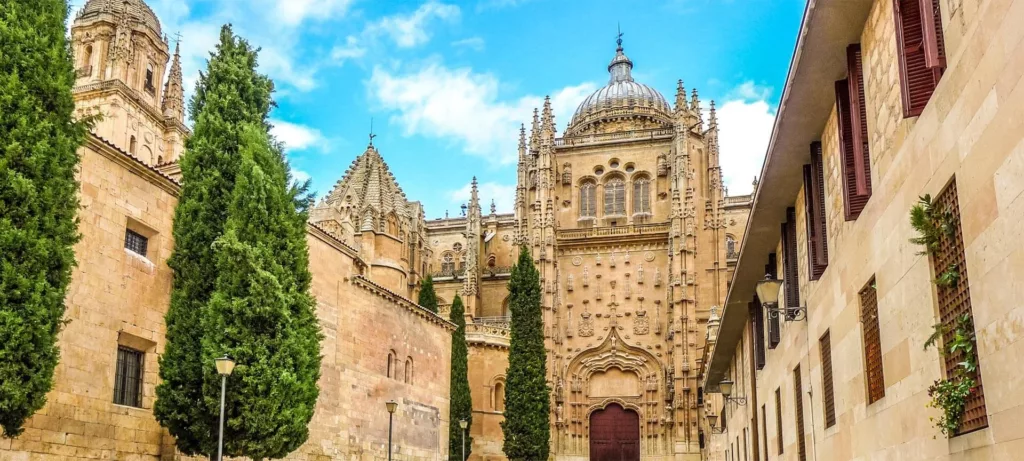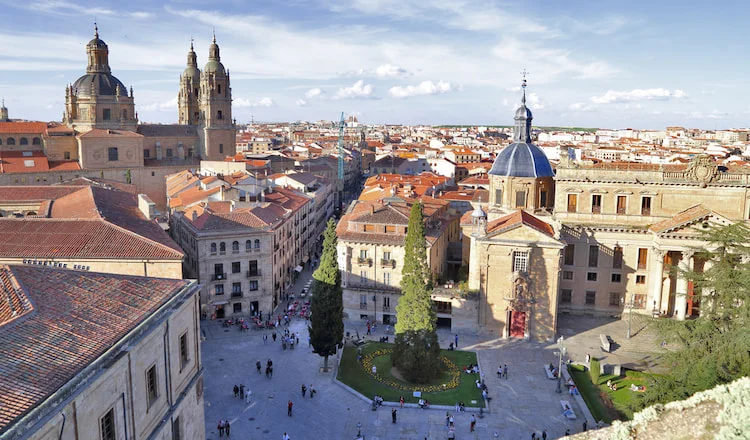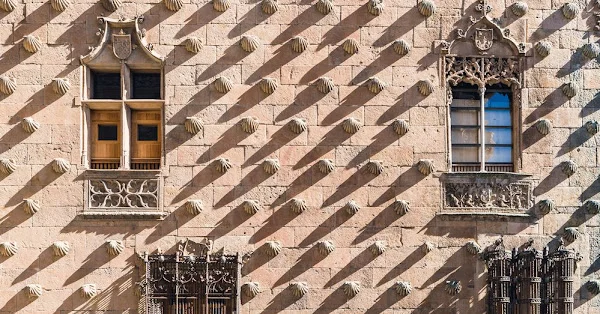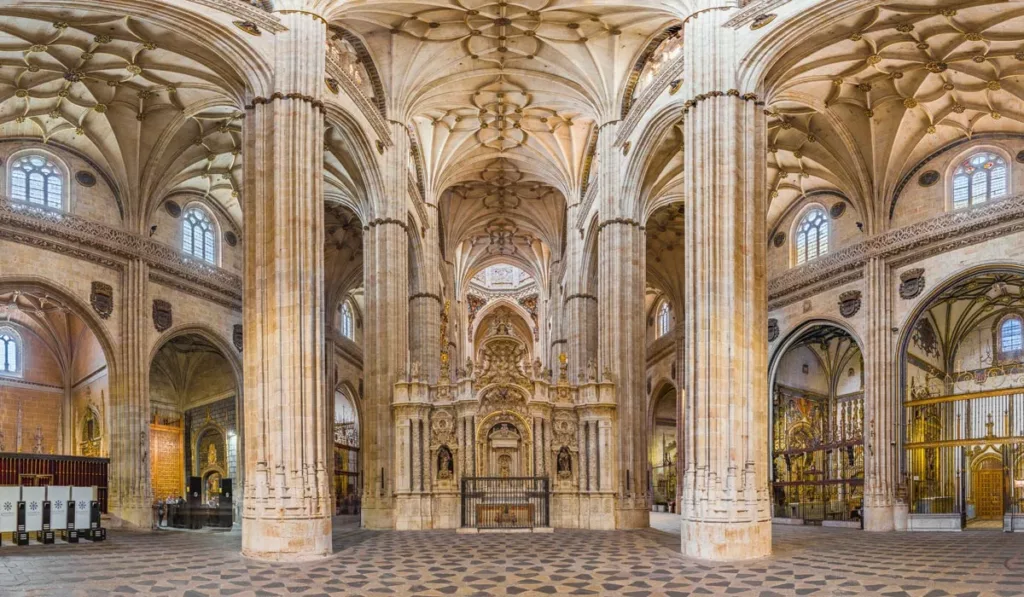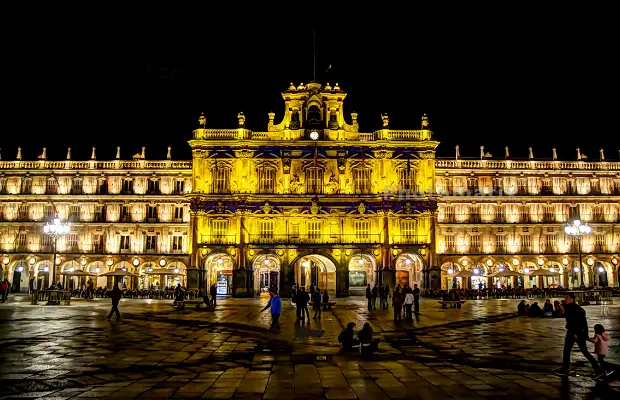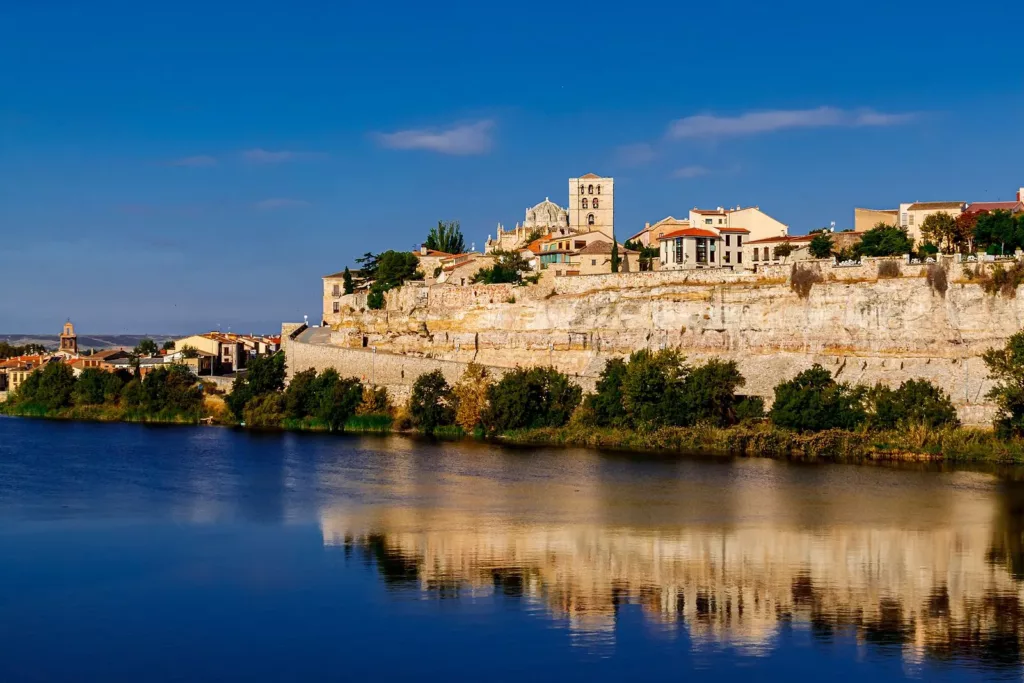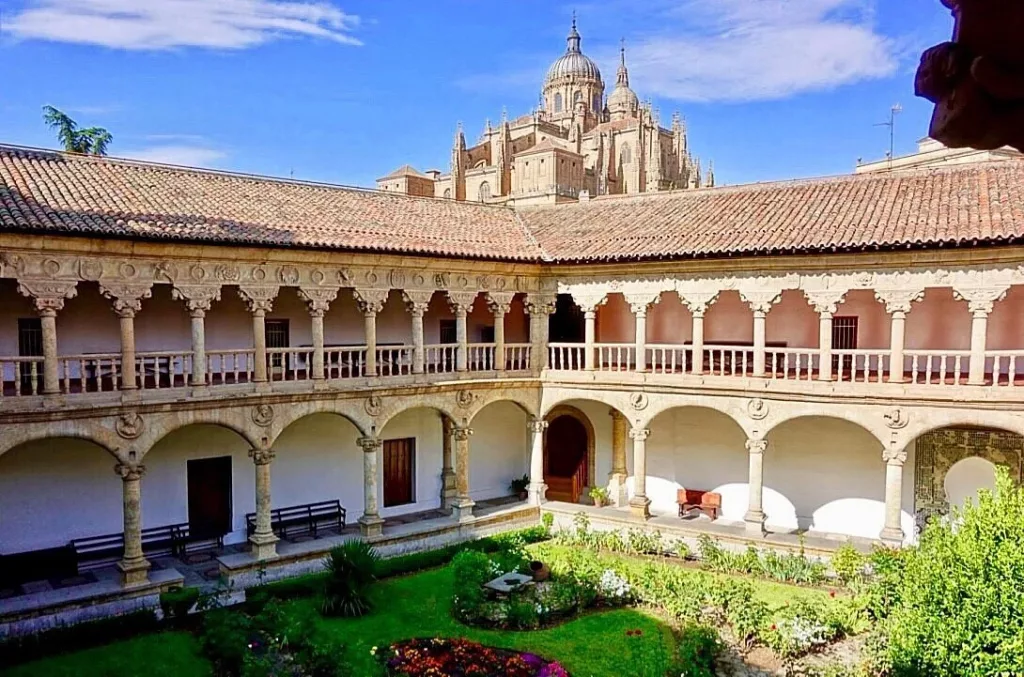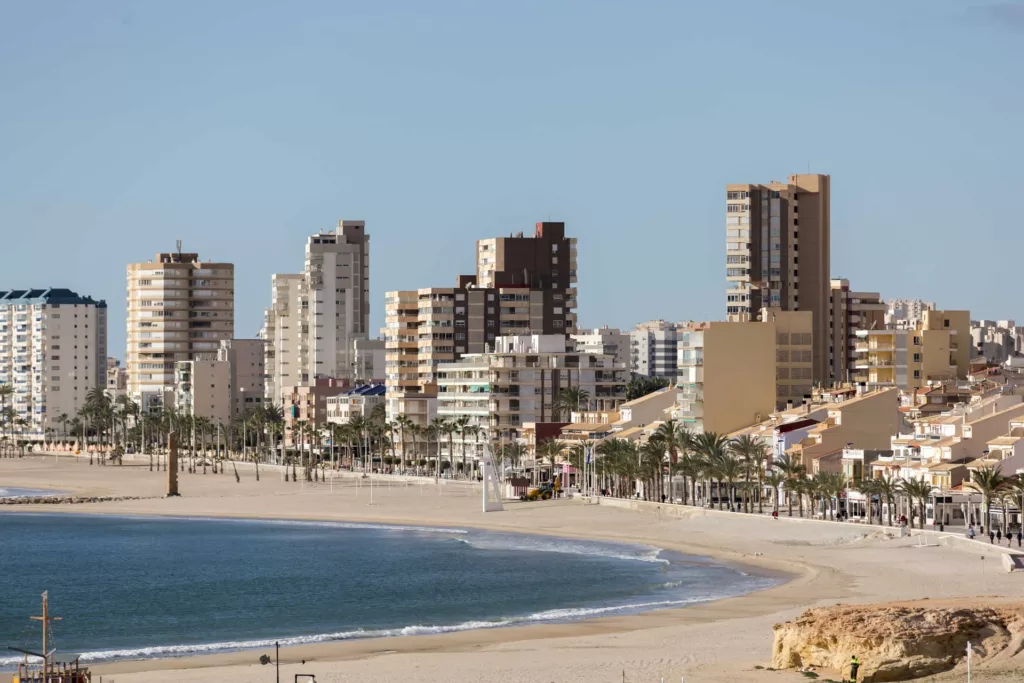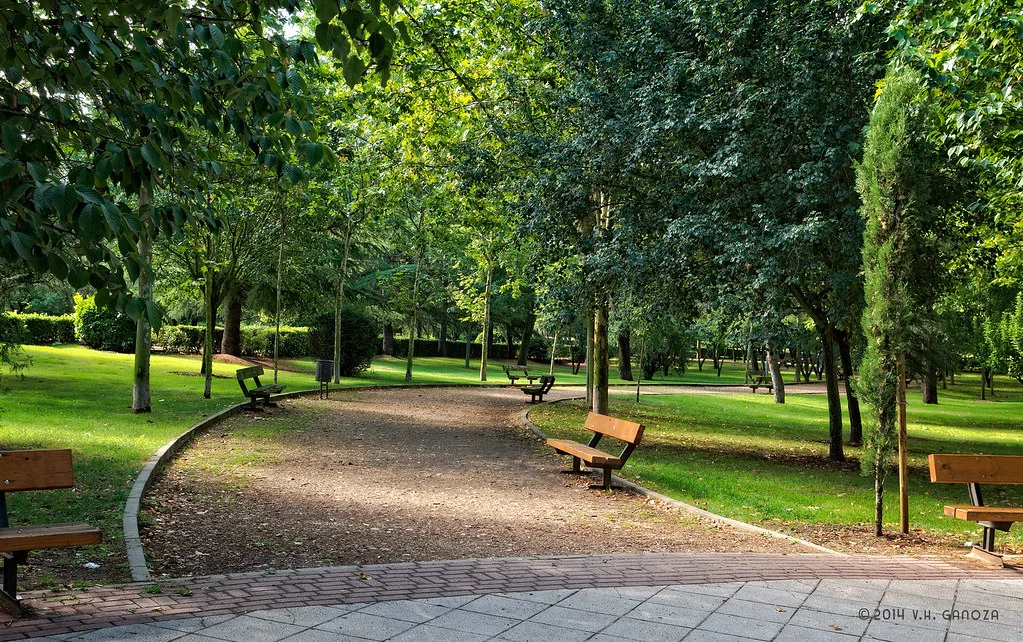Salamanca, a city in western Spain, is one of the country’s best-kept secrets. With its stunning Gothic and Renaissance architecture, lively atmosphere, and fascinating history, it’s no surprise that Salamanca is a popular destination for travelers. Whether you’re interested in exploring the city’s many museums and galleries, wandering through its charming streets and squares, or simply enjoying the local cuisine, there’s no shortage of things to see and do here. In this blog post, we’ll be taking a closer look at some of the best tourist attractions that Salamanca offers, so you can start planning your own unforgettable adventure in this beautiful part of Spain.
Table of Contents
Salamanca Baroque Church La Clerecía
The church, formerly called the Royal College of the Company of Jesus, is in the old town. Construction began in 1617 by request of Phillip III of Spain’s wife and featured typical Baroque characteristics. The structure has a public component that includes the church and school rooms and a private section where the monks used to dwell.
Its towers were created to bring Christians closer to heaven and to provide a breathtaking view over the city’s rooftops. The Patio Barroco, enclosed by a two-story sanctuary and the Escalera Noble, is particularly magnificent. Salamanca Pontificia University now has its headquarters at the Clereca.
This monument is available to the public daily with an admission fee, but on Tuesday mornings, admission is free. Tourists will love viewing the magnificent interior of the Cathedral. They may also visit the Clereca Towers for spectacular views of the city.
Museum of Automotive History
Vintage automobile fans will like the Museum of Automotive History, which houses an extensive collection of old vehicles and related artifacts. The museum also exhibits the history of automobile manufacture and design.
The Gómez Planche foundation manages the museum in partnership with the Salamanca municipal council. It opened in 2002 at the old Salamanca Electricity Company building. It is intended to depict the evolution of the vehicle from the first century B.C. to the present and future. Over 150 automobiles are on display in the permanent exhibition.
The Benz Motorwagen, which went into production in 1885, was the first internal combustion car. Rolls Royce, Hispano Suiza, Pegasus, BMW, Jaguar, Cadillac, M.G., and Mercedes-Benz are among the prominent brands represented in the collection, as are Ford, Buick, Citroen, SEAT, and Fiat. Bultaco, Derbi, Ducati, Montesa, Honda, and Norton machines are among those on show. Recent Formula 1 race cars are also displayed.
There are also mechanical engineering equipment, bicycles, and design artifacts such as posters and badges. The museum’s displays vary regularly to portray the cars in their historical context.
Convento de San Esteban
The Convento de San Esteban features a magnificent church erected between 1524 and 1610, with a rich Plateresque front.
The Cathedral contains a gilded high altar by José de Churriguera, one of the sculptor’s best works, and three side altars constructed by his pupils. The grave of the Duke of Alba, administrator of the Netherlands previously under Spanish dominion, is located to the left of the high altar.
Not to be missed is Antonio Palomino’s 1705 Triumph of the Church fresco, the convent’s two-story cloister with magnificent medallions, attractive decorative figures, and a staircase by Gil de Hontañón.
Old Town Landmarks
Nearly all of Salamanca’s most prominent tourist sites, including churches and university buildings, can be found in the city’s Casco Historico, also known as the Old Town. There are also other historical sights and buildings worth visiting around Old Town.
One of which is the Roman Bridge, a significant monument inextricably linked to the city’s identity. The Roman Bridge has been included on Salamanca’s coat of arms since the 13th century. The bridge dates back to the first century C.E. and retains more than half its original stone arches.
The Palacio de la Salina is also well worth a visit, with its ornately adorned Plateresque façade and arcaded courtyard. This ancient structure, a former manor house, currently houses Salamanca’s Provincial Council. Tourists are welcome to visit the Patio, which is the sole public area of the structure. The terrace is available every day and is free to enter.
Huerto de Calixto y Melibea, a charming garden located on Calle Arcediano, is another tiny but popular attraction. It is well-known for its diverse plant life, romantic atmosphere, and stunning views of the river and Cathedral, which you can visit daily!
Casa Lis: Museo Art Nouveau y Art Déco
This excellent museum of decorative arts is housed in Casa Lis, an Art Nouveau structure built in the early twentieth century. On the other hand, the north front of the building exhibits characteristics of Modernist design, one of the rare instances in Salamanca.
With about 2,500 items, the collection spans the late nineteenth and early twentieth centuries. Jewelry, decorative glass, furniture, vintage toys, and even a Fabergé egg are among the items in the collection. The collection of paintings is notably significant, containing works from Salamanca painters like Celso Lagar and Mateo Hernández, as well as 19th-century Catalan artists. The museum also houses the world’s most incredible collection of porcelain dolls, including chryselephantine statuettes and glass pieces of particular interest.
The museum is open from Tuesday through Sunday, and guided tours are available. The museum’s gift store and café are extremely popular with visitors.
Old Cathedral of Salamanca
Salamanca’s cathedral complex consists of the Old Cathedral and the New Cathedral, which share the magnificent bell tower. The Old Cathedral, also known as Sta. Mara Cathedral is one of the most attractive in terms of style. It features a Latin cross design with three naves completed in both apses and an incredible dome above the transept known as the Torre del Gallo.
Large naves are divided by pointed arches and covered by rib vaults on the inside. This column structure features many capitals carved with magnificent sculptures executed by many artists. The Major Altar’s altarpiece has one of the town’s most critical graphical masterpieces.
The church was completed in 1445 by Nicolás Florentino and depicted the lives of Jesus Christ and the Virgin Mary. It is dominated by a central depiction of the Virgen de la Vega.
The old chapel of San Martin houses some of Europe’s finest Gothic murals. The sanctuary, redesigned after an earthquake in 1755, is highly noteworthy, including chapels such as Talavera and San Bartolomé.
The walls of the Old Cathedral are covered with sculptures, and its façade is magnificent. This Cathedral is a must-see for those who travel to Salamanca. It stands proudly as an emblem of faith and beauty.
The Old Cathedral of Salamanca has been a point of pride for the city, with its grand design and interesting history drawing visitors from all around. Its unique architecture is a testament to the skill and care put into crafting it. Tourists can admire its finely crafted sculptures, marvelous altarpiece, exquisite Gothic murals, and beautiful façade. At the same time, they explore this awe-inspiring place of worship. The Old Cathedral has stood tall in Salamanca since 1445. It will undoubtedly remain an important part of the city for years.
The University of Salamanca
Salamanca University, the first university in Spain, was established there in 1218. It was based after Bologna University in Italy and became a central intellectual hub of Medieval Europe.
In a period when the church still considered it heretical, Salamanca University embraced the Copernican worldview, the theory that the sun is the center of the universe. It also boasts the presence of Miguel de Cervantes, the most famous writer in Spain and author of the novel Don Quixote.
The building’s well-designed façade has earned it a reputation as one of the world’s most aesthetically pleasing academic structures. The plateresque sculptures were installed by the Catholic rulers in 1592 and are a stunning addition to the building. The ‘frog on a skull,’ one of the most complex sculptures, is sought by many visitors. Salamanca University is the third oldest university in the world and a stunning architectural marvel. Its location has inspired several conjectures about its significance.
Casa de las Conchas
In 1517, a knight of the Order of Santiago de Compostela named Rodrigo Arias de Maldonado finished construction on the famous Casa de las Conchas. The unusual facade, covered in over 300 shells, is a major draw for tourists.
These shells signify medieval pilgrims making their trail to Santiago de Compostela. Sunlight has a dynamic influence on the facade’s pattern throughout the day. Elements of Mudejar architecture, common in Isabelline art, may also be found in the structure. Take note of the elaborate wrought-iron window grilles and the Gothic coat of arms on the front door.
It’s well worth visiting Casa de las Conchas and gazing around the newly repaired courtyard and seeing the fine craftsmanship. The House of Shells was formerly Maldonado’s palace. Still, it now houses a library and tourist information center, which has a stunning two-story interior courtyard open to tourists.
(Catedral Nueva) New Cathedral of Salamanca
The New Cathedral of Salamanca stands next to the Old Cathedral. It was begun in the 15th century and continued to the 18th. New Cathedral is one of Spain’s largest and most spectacular instances of Gothic architecture, with Baroque, Plateresque, and Renaissance touches. The Plateresque entrances are elaborately ornamented, depicting Christ’s triumphant entry into Jerusalem. The tower’s 110 meters in height are topped with an attractive dome.
The building’s 104 meters of length and 48 meters of breadth provide an overpowering sense of space. The height of the sanctuary’s dome is 38 meters. It stands in stark contrast to its medieval forerunner. Although they are of different architectural eras, they complement one another well. The towers and battlements provide a breathtaking view of the city, and visitors are welcome to explore them.
The New Cathedral is open to the public, and visitors can explore its many rooms, towers, and chapels. Visitors can also purchase souvenirs from the gift shop located inside the Cathedral. It is a great way to get up close with Spanish history and architecture while enjoying a unique experience. With its immense size and ornate decorations, the New Cathedral of Salamanca is sure to be an unforgettable experience!
Plaza Mayor
The Plaza Mayor, one of the largest squares in all of Spain, serves as the beating heart of Salamanca. Its construction spanned two decades, ending in 1755. The Plaza’s Baroque design and ornate embellishments make Plaza Mayor one of the most stunning public spaces in the country. This square has several impressive structures, including the Royal by Alberto de Churriguera and the Town Hall in the Churriguera style, designed by Andrés García de Quiñones.
Plaza Mayor has hosted important events and festivities, including bullfights up to the 19th century. The area comes alive in the evenings, thanks to the abundance of cafés and restaurants housed in the arcades. So, this square is a great starting point if you want to get a feel for Salamanca’s vibrant nightlife.
The Palacio de Monterrey, a magnificent Plateresque palace, may be found in the southwest corner of the Plaza Mayor, down the Calle del Prior. Here, you can truly take in the Spanish atmosphere as you stroll around the plaza and observe the constant stream of visitors!
Day trip to Zamora
A day trip to Zamora from Salamanca is a fun way to explore the historic Castilla y Leon region of northern Spain. Located in the province’s west, Zamora is known for its large medieval castle and Romanesque churches scattered throughout the city. The city streets are lined with Renaissance-style buildings, making it an interesting place to walk around and take in some sights. You can catch a train from Salamanca or drive; either way will take about two hours. Once in Zamora, you’ll have plenty of time to explore its many attractions, including Plaza Mayor, Calle de San Juan, Catedral de Santa Maria la Nueva, and much more.
Convento de las Dueñas
Convento de las Dueñas in Salamanca is an impressive sight to behold. With its towering walls, serene gardens, and cool courtyards, the convent has been a spiritual sanctuary for centuries. Founded by Doña María Manrique in 1517, it was home to religious nuns until 1835, when the Spanish government confiscated it during the Liberal Revolution. Today, this iconic building stands proudly and boasts a rich cultural history that makes it one of Salamanca’s most popular tourist attractions. Visitors can explore its stunning architecture and artworks from the 16th and 17th centuries, as well as learn about its fascinating history through displays and audio tours. There’s also a cafe onsite serving delicious food made with local ingredients. Whether you’re visiting Salamanca for its history or simply to admire its beauty, a trip to Convento de las Dueñas will leave a lasting impression.
Visit El Campillo
El Campillo is a stunning place located in the historic city of Salamanca. It was originally an Arab fortress, and although much of the original building has been lost, its ruins still remain today as a testament to its rich history. Aside from its historical significance, El Campillo provides visitors with plenty of outdoor activities, such as hiking trails and picnic areas. Several viewpoints around the area offer breathtaking views of the surrounding countryside. It is a great spot for visitors to enjoy the beauty of Salamanca and its cultural heritage. El Campillo has it all if you’re looking for a peaceful stroll, a challenging hike, or an exciting photo opportunity.
Jesuítas Park
Jesuítas Park in Salamanca is a great place to visit if you’re looking for a relaxed atmosphere and plenty of green space. This beautiful park offers lush gardens, a lake, playgrounds, and plenty of walking paths so that visitors can take in the beauty and tranquility of the area. Visitors can also enjoy various attractions like concerts on summer nights, theatrical performances, and strolls along the medieval walls surrounding the park. The park is located within easy distance of downtown Salamanca, making it the perfect spot for a romantic evening or an afternoon with friends.
Salamanca Travel FAQ
What is Salamanca best known for?
Salamanca is best known for its incredible history and culture. It’s the home of one of the oldest universities in Europe, Universidad de Salamanca, founded in 1218 by King Alfonso IX. The university’s old buildings still stand today and are a tourist destination. The city has been designated as a UNESCO World Heritage Site due to its many well-preserved historical landmarks, such as the Plaza Mayor, Casa de las Conchas and Catedral Nueva. The streets come alive at night with Flamenco music and traditional Spanish tapas restaurants.
What is special about Salamanca, Spain?
It’s home to one of the oldest universities in Europe, the University of Salamanca, which dates back to 1218. Its ancient buildings and cobblestone streets make it a popular tourist destination. The city also has impressive churches and monuments, including two cathedrals, the 13th century San Martín Church and the Convento de las Dueñas palace. The iconic Plaza Mayor square is another highlight of Salamanca – it’s considered one of the most beautiful squares in all of Europe! In addition to its historical significance, Salamanca is famous for its unique cuisine.
How long should you stay in Salamanca?
Suppose you’re looking for a short visit. In that case, 1-2 nights should give you enough time to explore the city’s main attractions, such as the Plaza Mayor and Catedral Vieja. However, if you’d like to immerse yourself in its culture and history, then 3-4 days would be ideal. Many other interesting sights around the city can easily occupy this amount of time, including the University of Salamanca, Puente Romano over Río Tormes, and Casa Lis art museum. Ultimately it’s up to you how much time you want to spend exploring this historic Spanish city!
Why is Salamanca called the Golden city?
Salamanca has earned the nickname “Golden City” due to its beautiful architecture. Its most notable building is the University of Salamanca, built in 1218, making it one of the oldest universities in Europe. The university is made up of many Renaissance-style buildings, and some have intricate golden details decorating them. This makes the city look golden when sunlight reflects off these details.
What food is Salamanca known for?
Salamanca’s most famous dish is the ‘Hornazo de Salamanca’, a pastry made from salted pork, eggs, and spices. Other local specialties include “Torta del Casar” cheese (a creamy sheep’s milk cheese), “Cochinillo Asado” (roast suckling pig), and of course, the traditional “Jamón Serrano” (cured ham).
